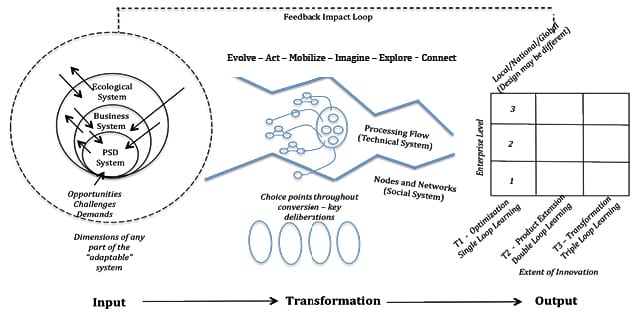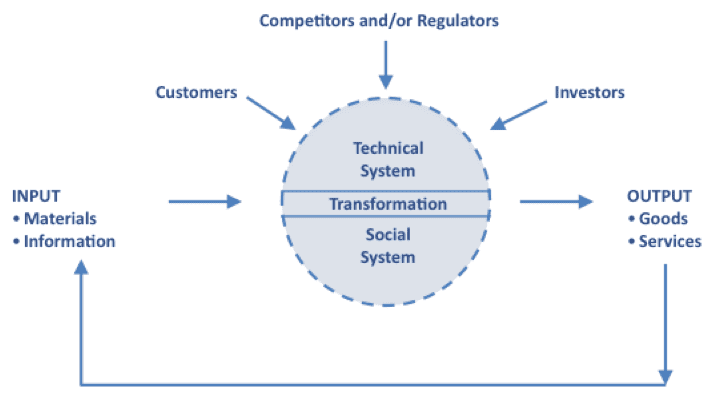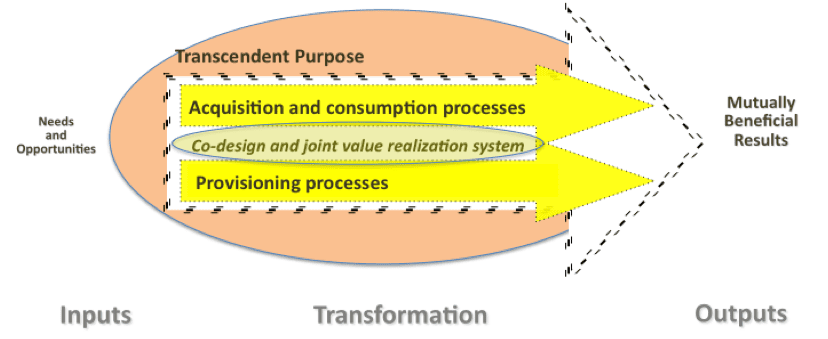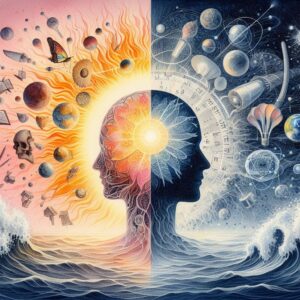Last week in Part I, I briefly specified three organizational forms of Adaptive Enterprises that we are seeing in today’s world of work –
1) Hierarchically-integrated, Decentralized Organizations
2) Value Realization Networks
3) Social Eco-systems
The images (transformation process models) you see below portray the functioning of each Adaptive Enterprise form. At its most basic, each process model incorporates a set of starting inputs, the actions that transform those inputs plus the outputs that emerge as a result of the actions.
Hierarchically-integrated, Decentralized Organization
Functioning, in the case of the hierarchically-integrated, decentralized form, begins with a set of materials and/or information which passes through a socio-technical work system (work processing flow, roles and interactions). Through jointly optimizing both social and technical subsystems, the inputs are transformed into value-added goods and/or services offered in the marketplace. A contemporary organization illustrating hierarchical integration and decentralization is Apple.
This form of organization may consist of multiple Business Units each with its own sub-units or teams. In order to optimize efficiencies, each Business Unit designs its workflow based on the same transformation process model.
Value Realization Network
In a value realization network, multiple entities within an industry bring forward needs and opportunities (inputs) under the shared umbrella of a transcendent (higher-order) purpose. These many entities (customers, competitors, orchestrators) very likely have their own unique “at-home” transformation processes. Nonetheless, they agree to design and participate in newly-formed technical processes — acquisition, consumption and provisioning — for the sake of mutually beneficial results. A concrete example of a value realization network is the Socio-Technical Systems Roundtable.
In order to realize outputs of mutual benefit to the parties involved, new social functions are also designed — shared governance, information capital, seamless working relationships and distributed leadership. The network’s co-design of a system for jointly realizing value is bound by their forming purpose.
Social Eco-system
 Assumptions Inherent in Model
Assumptions Inherent in Model* All types of innovation can occur at any level of the “adaptable system”
* The requirements for adaptation can be directed or self-directed
* The scale of the adaptation can range from the individual to multiple enterprises to the world
With regard to the functioning of a social eco-system, its multiple entities consist of both hierarchically-integrated, decentralized organizations as well as value realization networks. In addition, multiple governments, non-government agencies, academic institutions and individual advocates are potential participants. Hence, the inputs of opportunities, challenges and demands will vary greatly across ecological, business and product service delivery (PSD) systems. What all participants do share in common is the will to resolve a societal issue affecting their shared environment. A relatively recent example of a social eco-system is the National Commission on the British Petroleum deepwater horizon oil spill.
The transformation process designed in a social eco-system considers the social (nodes and networks) and technical (processing flow) systems in its design of key deliberations or dialogues. These dialogues allow for eco-system agreement while maintaining local autonomy and as such, collectively progress through the following steps — evolve, act, mobilize, imagine, explore, connect.
Local autonomy allows for the necessary customized innovation (outputs) to occur given the variety of experience and capacity available to the local entities. In the social eco-system, the outputs are not increasing value realization but rather shared sense-making, shared appreciation, shared will, shared purpose and shared consciousness.
As you consider these three adaptive enterprise forms and their very different ways of functioning, which form do you find yourself most familiar with? Can you provide me with some additional examples of each form?
Source:
STS-RT Integration Team. 2011. Matrix of Emerging STS Design in 21st Century Organizing.






